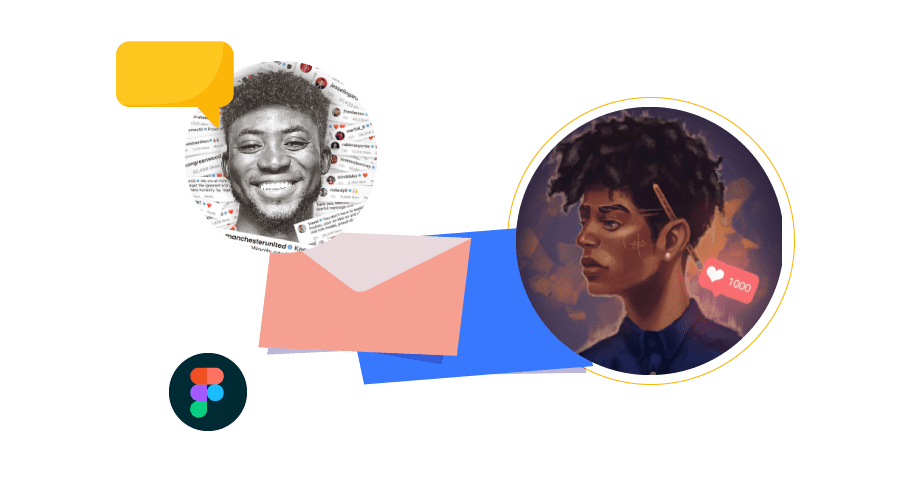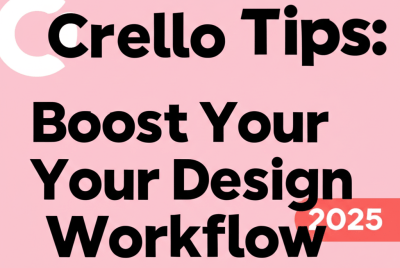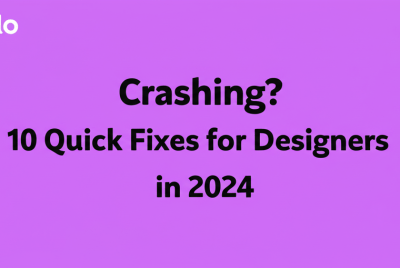A famous writer once said, “Different routes lead to the same destination.” This idea rings true for many professionals, especially designers; the journey of a designer often branches out from one discipline to another, like transitioning from UI/UX design to motion design or from Architecture to Brand illustration
But designers aren’t alone in navigating these multiple pathways that eventually converge in the marketplace; Studies show that many people end up with careers far removed from their original academic studies or initial interests!
There are four main reasons for this career shift:
Diverse Application :
Degrees earned in school often provide a broad foundation, opening up diverse possibilities for real-world application. For instance, a degree in architecture applies to building design and careers in urban planning, graphic design, or even game environment design.
Evolving Interest
Interests naturally evolve over time. As individuals grow and gain new experiences, they often find themselves drawn to new fields or skills. For designers, this might mean transitioning from fliers to emphatic fields like building engaging User experiences
Job Market Pressure
With inflation-driving policies, employees are increasingly compelled to skills beyond their core expertise. For designers, this could mean acquiring skills in areas like coding, 3D modeling, or motion graphics.
Financial Growth
Many individuals engage in the popular knowledge stacking for diversifying income without strain. For designers, this could mean transcending initial areas of expertise to tap into more lucrative fields like digital marketing.
]Basit’s journey into motion design and subsequent success is a fascinating blend of all 3 factors just mentioned.
And while Basit in today’s spotlight explores his entry into motion design he also discloses rates obtainable in the world of motion design.
Ready for a deep dive into jumping careers and industry rates? Then buckley up for an interesting spotlight with Basit.
Here are 10 questions with Basit
How did you get started with motion design?
Honestly, I began as more of a brand and packaging designer. My introduction to motion design was somewhat accidental, I stumbled upon it because of a competition hosted by NGD for logo animation. The prize money caught my attention lol but I decided to give it a shot, even though I knew nothing about the field.
With only two weeks to complete the task, I spent one week learning the tools and the second producing the animation. To my surprise, I finished in 4th place! I hadn’t expected to be in the top ten but my curiosity was piqued. That moment made me realize that if I could achieve that with just basic skills, imagine what I could do if I really took it seriously. So yea, you can say i was tempted by the money.
How much did you first earn as a motion designer?
After working on tons of free projects to build my skills, I was fortunate to land my first paid motion design job. It was a logo animation of gospel brand, i earned 30k/35k for the project. It felt like a significant milestone at the time.
What do you think of this figure now, and how much would you like to charge in 3 years?
Looking back, earning 30k/35k for my first project wasn’t bad at all, especially considering I didn’t have a solid portfolio and my skills were still developing. That project gave me the confidence to keep learning and improving.
Nowadays, my focus is more on the value I bring and solving the problem at hand but of course being able to earn more is always a plus. In 3 years, I’d like to be in a position where I’m charging significantly more in line with the value I provide and the impact of the projects I work on.
How much do you charge for motion design projects now?
I’m not too keen on discussing money, as I don’t believe it fully reflects skill or worth. Pricing depends on the client and the complexity of the project. That said, for logo animations, I currently charge between 100k to 150k+ and For a full-blown motion video, my rates range from 400k to 600k+ depending on how intricate the project is.
Do you think this field pays more?
I believe every field has the potential to pay well, it really comes down to how good you are with your pricing strategy and marketing. I know a few people who won’t do a logo animation for less than 500k, so the earning potential is definitely there if you position yourself right (I’m speaking to myself too lol).
What would you do differently if you could correct some mistakes in the past?
Honestly, I wouldn’t change anything. I studied computer science and spent much of my time coding, hacking, tampering with school WiFi, exploring engineering, logical reasoning, and design. All of those experiences shaped who I am today. People need to understand that we’re human, we’re not meant to be perfect. We’re forgetful and mistakes are inevitable but they’re a crucial part of the learning process.
Tell us about your most fulfilling moment as a motion designer?
One of my most fulfilling moments was at a conference held at Eko Hotel, where a video I created for Dettol, Harpic and Mortein was played. The video focused on serious issues in Nigeria, like how young children often fall sick/die from malaria and diarrhea, especially in communities without access to clean water or proper sanitation. It highlighted how Reckitt could help address these challenges. The Governor of Lagos State was present and mentioned how engaging and impactful the video was. Shortly after, I received a call from my dad, who had seen the event. He told me how proud he was and prayed for my success. That was a truly memorable moment for me.
What’s your strategy for landing clients?
These days, I rarely seek out clients since I work full-time at a design agency(Leviate). For freelance work, most of my clients come through referrals from past projects or from people seeing my work on social media. So to keep it simple, do good work, showcase it, and trust me you’ll soon find yourself in a position where you’re the one hand picking the clients to work with because the opportunities will keep coming!
Do you think motion design is harder than any other design?
Absolutely! It took me a while to finally decide to pursue motion design full-time because initially, I thought it was just about creating animations (lol lazy me). However, motion design encompasses a wide range of skills including coding for expressions, layout, color theory, typography, storytelling, animation, compositing, sound design and more. It’s a complex field but once you dive in, you’re likely to fall in love with it because it’s incredibly fun!
What are your favorite motion tools and why do you use them?
My favorite tools tend to evolve over time as the world of design is constantly changing, and we need to adapt. Recently, I used ChatGPT to help resolve a coding expression that wasn’t working properly. Initially, I thought I was stuck but it offered an easier route to the solution.
Also, I’m Currently exploring RIVE, Unreal Engine for motion design and Procreate Dreams. For plugins that make my life easier in After Effects, I rely on Motion Tools, Overlord, and EaseCopy. These tools help streamline my workflow and enhance my creative capabilities.
Describe Motion design in 3 words.
“Creative storytelling expression” so in essence “Design, animation, sound”.
Make Every Design Skill A Source Of Alerts
One of the most common questions designers ask is, “How much do motion designers make?” and “Can I make a lot of money as a motion designer?” The simple answer is yes—motion design is quite valuable skill and with the right approach can become lucrative.
However, the real key to design success isn’t just mastering the technical aspects; it’s cultivating mindset that addresses client challenges in innovative ways.
Eventually, mindset translates to money and designers want to hone in on skills that focus on mindset growth in the industry such as tricks for building strong personas.
Want to increase your earnings regardless of your design skill?
Double your earnings without increasing workload.
Hacks to keeping clients happy in 2024
7 top reasons why designers stay broke
The secret to building strong brand personas
Want to escape common pitfalls by staying informed easily?Then join our growing newsletter camp and get necessary tips for growth!


